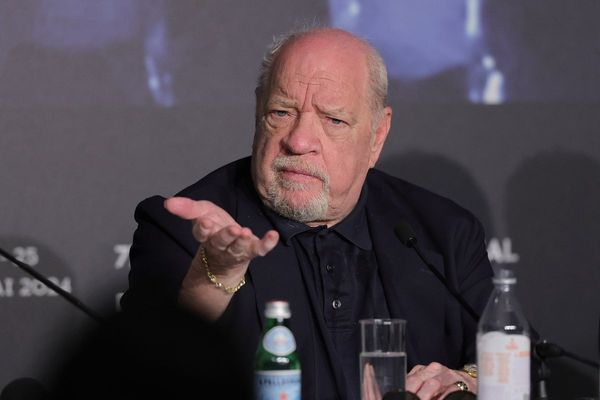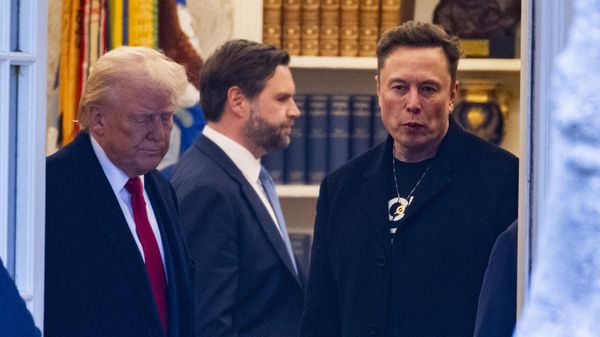
As soon as the Major League Baseball Players Association declined the league’s request for federal mediation, a wave of player posts swept across Twitter.
Many of them bore the hashtag, “AtTheTable,” a jab at the owners for requesting mediation earlier this month but not making the counteroffer they’d promised. Some union leaders, such as association representative Max Scherzer, took the opportunity to lay out the MLBPA’s goals. Others, including Cubs catcher Willson Contreras kept the message short and sweet:
“A significant part of collective bargaining is … actually bargaining.”
The unified push multiplied the players’ reach, creating a snowball effect as fans commented, retweeted and adopted the hashtag.
“The craziest part is, it’s organic,” Cubs MLBPA representative Ian Happ said in a phone interview this week. “For the most part, players want to stay relatively quiet because they want the process to work, and they want the process to play out in the bargaining room. But the challenge is that when it becomes more public, or when there’s some misinformation that needs to be dispelled, those are the times that players have taken to some of those places to really write the story the way it should be.”
As fans’ frustrations with the lockout escalate, communication with the fan base becomes ever more important for both the players association and MLB.
Pitchers and catchers originally were scheduled to report to spring training this week, but the lockout has pushed back that date and delayed spring-training games until at least March 5. If MLB and the players association don’t ratify a new CBA in the coming weeks — and all reports indicate the two sides remain far apart on core economic issues — an on-time Opening Day is in jeopardy.
“One of the most disappointing parts of the entire process,” Happ said, “is that we have fan bases that deserve better than what we’ve given them over the last few years.”
Much more is at stake than in the 2020 return-to-play negotiations, and the two sides never came to an agreement then. Now, the players are pushing for meaningful changes to a system with a track record of tanking, service-time manipulation and a luxury tax that functions like a soft salary cap. The owners would prefer a CBA closer to status quo, with some additions like expanded playoffs.
In short, this could take a while.
Commissioner Rob Manfred last week expressed a more optimistic view, telling reporters in Orlando, “You’re always one breakthrough away from making an agreement.”
The urgency of the moment also has inspired a plan for more frequent bargaining. MLB announced Friday, in a statement to national media, that members of the owners’ bargaining committee would be joining in-person meetings with the MLBPA every day next week. So far, however, each new proposal has brought reports of only modest movement.
At the same time, the tensions between the two parties have played out publicly, where fan opinion can be leveraged. The back-and forth over federal mediation is a perfect example.
“We’re doing everything we can to get a deal done for our fans,” Manfred said in a news conference at the owners’ meetings in Orlando last week. “We had hoped that a federal mediator could provide some assistance to help the parties work through their differences and break the deadlock.”
With those comments, Manfred pointed the finger at the players association, which had formally rejected the request for mediation the day after the owners proposed it. But the players had already made their stance clear: #AtTheTable.
“We really wanted to get the ball moving forward with what we thought was going to be a counter from MLB at that time,” Happ said, “instead of heading into a pattern of mediation that hasn’t proved very fruitful in the past.”
Happ was referencing 1994, coincidentally the year he was born, when mediation failed to help MLB and the players association to an agreement. That strike was the longest work stoppage in MLB history, wiping out the rest of the regular season and the whole postseason. This lockout ranks No. 2 in length.
“It’s definitely been a history lesson,” Happ said. “At the same time, it’s a completely new age. . . . Players never had the ability to voice their opinions on social media, to have podcasts have a platform to openly talk about some of these issues.”
Happ himself has addressed aspects of the labor dispute on his podcast, “The Compound,” which he hosts with Cubs pitching prospect Dakota Mekkes and Tigers infielder Zack Short. Happ also partners with Connect Roasters, which introduced its “lockout blend” coffee this week. A portion of the proceeds go to The Players Trust, the charitable arm of the MLBPA.
Social media, however, is the more widespread direct communication method between players and fans. And the players have tapped into it to combat the league’s narrative with their own.
Even back in 2020, when return-to-play talks stalled, players started posting, “Tell us when and where.” This winter, when mlb.com wiped the site of player headshots for the lockout, replacing them with a faceless gray figure, players across MLB changed their social-media avatars to that blank headshot.
Among the Cubs, Marcus Stroman, whom the club signed just before the lockout, is the most active on Twitter. And he often levels criticism against Manfred.
“The players are ready,” Stroman posted last week. “Just waiting on Commander Manfred to stop ruining the game.”
The players are ready. Just waiting on Commander Manfred to stop ruining the game. Ofrob acting like he’s living in Gilead. Lmao may the lord open on this blessed day!
— Marcus Stroman (@STR0) February 10, 2022
Asked last week about players on social media expressing their distrust of the league and commissioner, Manfred dismissed the critiques.
“I don’t pay a lot of attention to social media, I’ll be honest with you,” he said in the news conference. “I think most of the commentary that’s out there is tactical.”
Maybe he should pay attention. Because while Manfred and the owners continue to use news conferences and releases as their direct line to fans, the players are switching things up.
The CBA fight itself is all about details, precise language and figures. But most baseball fans aren’t labor experts.
Getting fans to understand, and even get behind, bargaining goals takes connection and effective communication. Neither side has perfected an approach, but the players have begun to carve out a unified message.
“We want to be on the right side of leaving baseball better than we found it,” Happ said. “We want to do that for the player groups to come, but we want to do that for the fans. And that’s having competitive teams, and teams that are going out and trying to win every year and giving fan bases something to cheer for. That’s the biggest thing that we’re trying to impress upon people: That’s what we’re fighting for.”







